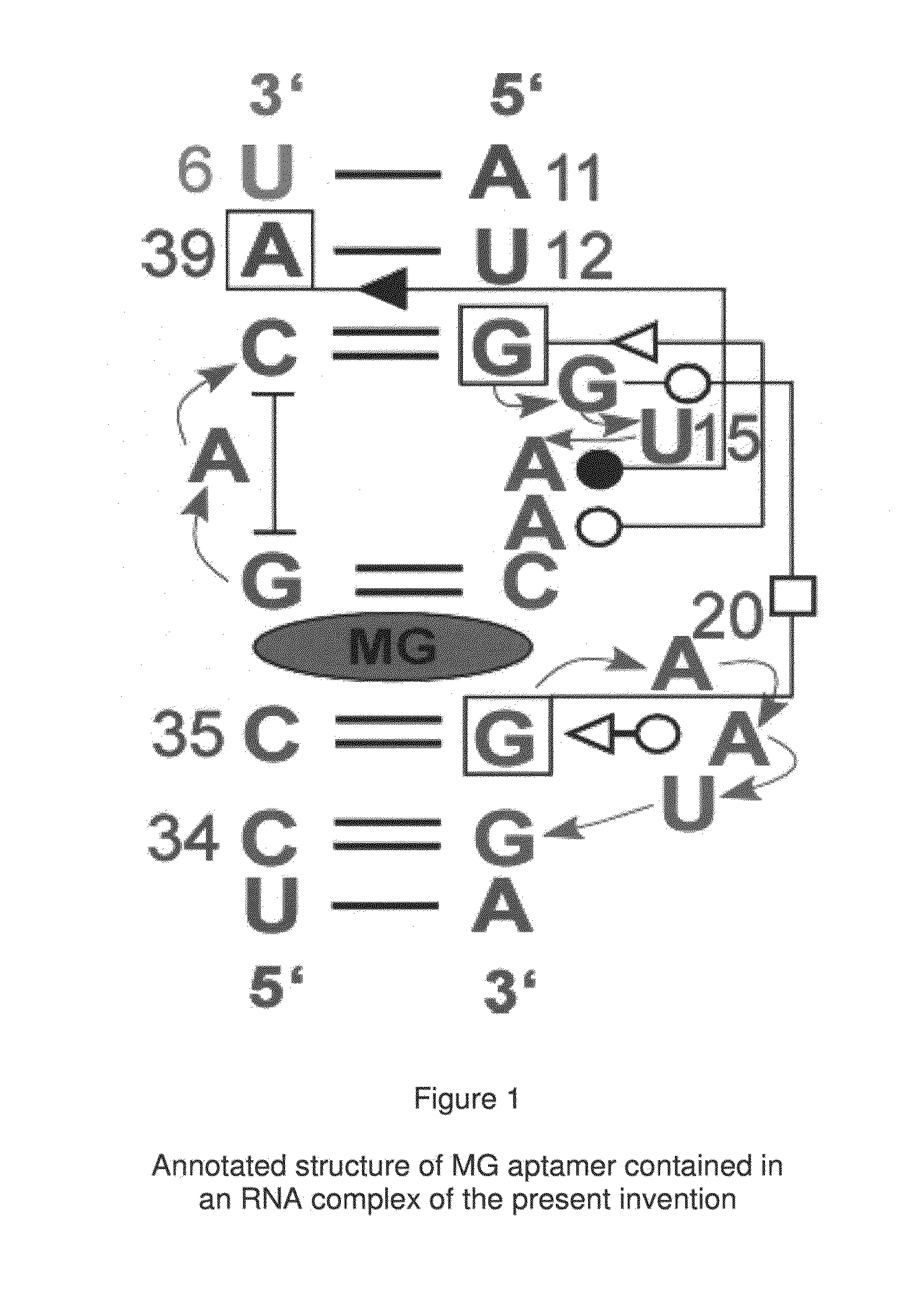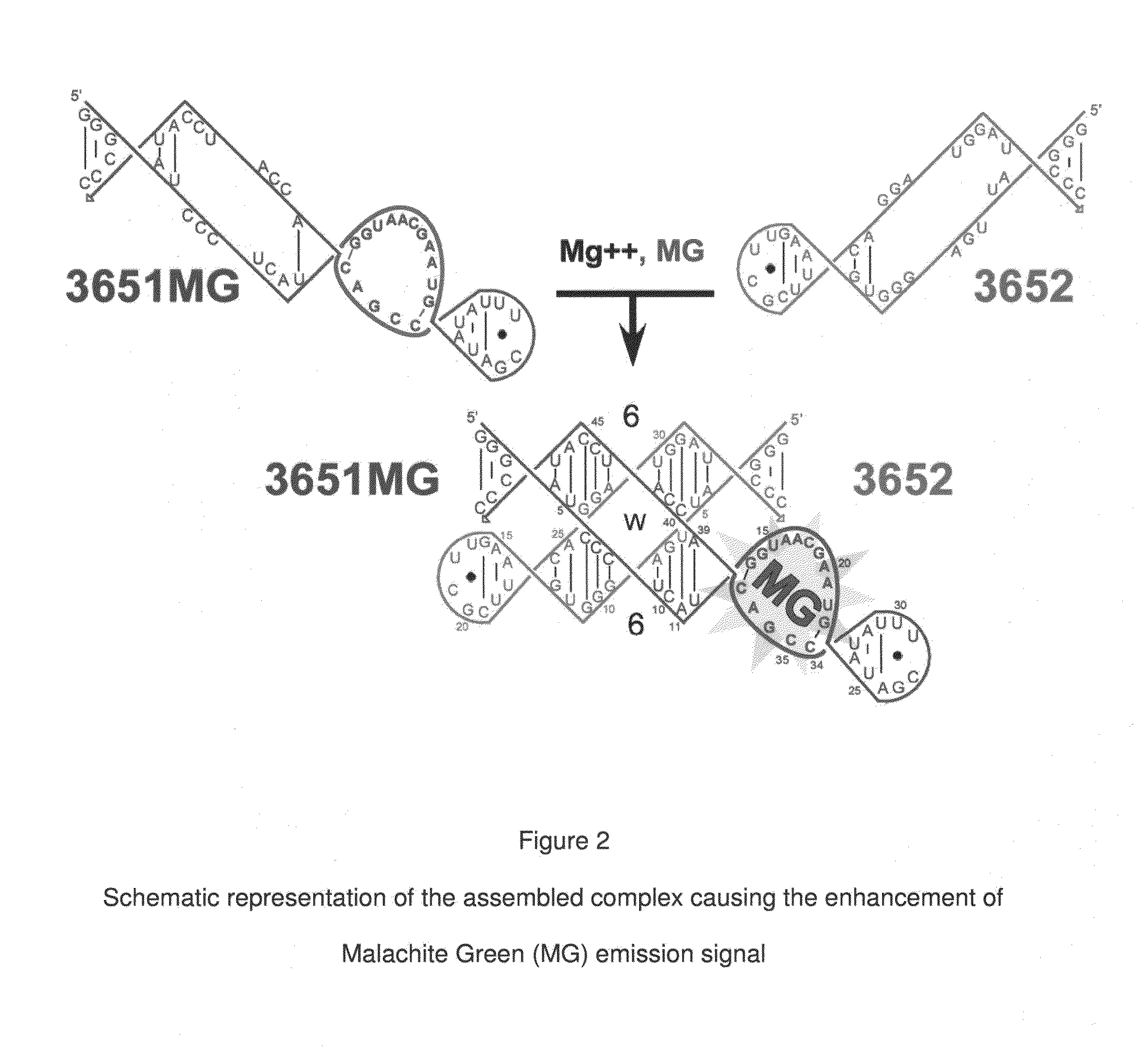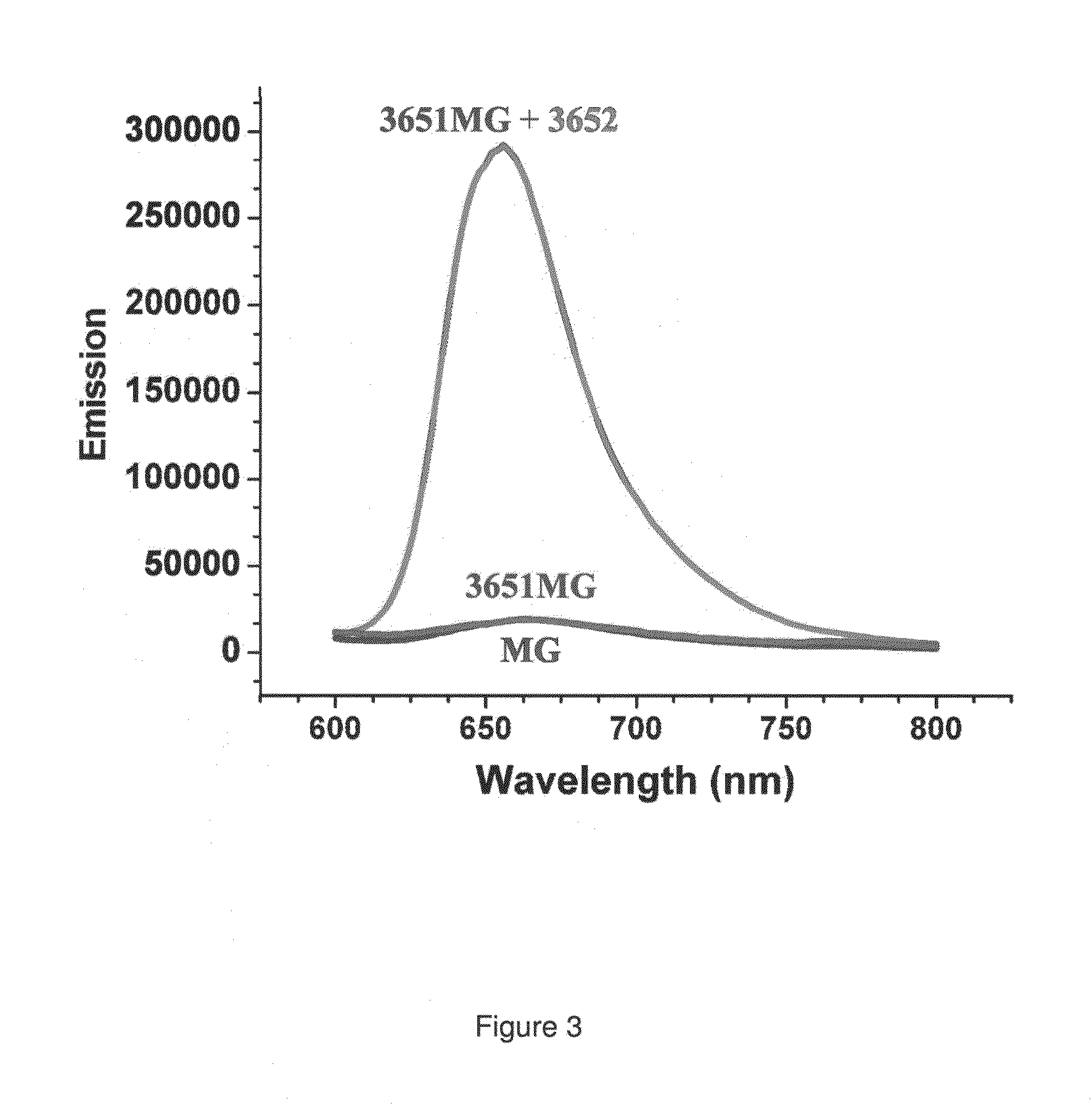RNA complexes featuring paranemic binding, methods of their production and sensors and analytical methods involving same
a technology of paranemic binding and complexes, applied in the field of biological and molecular biology, can solve the problem of limited diversity of artificial rna self-assembling modules (“rna tectons”), and achieve the effect of high throughpu
- Summary
- Abstract
- Description
- Claims
- Application Information
AI Technical Summary
Benefits of technology
Problems solved by technology
Method used
Image
Examples
Embodiment Construction
[0070]In accordance with the foregoing summary of the invention, the following presents a detailed description of the preferred embodiments, which are considered to be the best mode thereof.
[0071]In the preferred embodiment of the present invention, an aptamer internal loop positioned close to the paranemic binding site so the helix flanking the aptamer and stabilizing it can only form when the sensor RNA binds to a target (analyte) RNA containing the complementary sequence. When the sensor binds the complementary target strand, the aptamer's binding site is stabilized, and therefore it can bind MG. 3D modeling was employed to examine alternative positions and orientations of the MG aptamer relative to the paranemic binding motif. The orientation was chosen so that flanking Watson-Crick basepairs of the aptamer that form stabilizing base triples with “unpaired” aptamer adenosines are adjacent to the paranemic site. Different constructs were tested to find the optimal number of basep...
PUM
| Property | Measurement | Unit |
|---|---|---|
| Structure | aaaaa | aaaaa |
| Fluorescence | aaaaa | aaaaa |
Abstract
Description
Claims
Application Information
 Login to View More
Login to View More - R&D
- Intellectual Property
- Life Sciences
- Materials
- Tech Scout
- Unparalleled Data Quality
- Higher Quality Content
- 60% Fewer Hallucinations
Browse by: Latest US Patents, China's latest patents, Technical Efficacy Thesaurus, Application Domain, Technology Topic, Popular Technical Reports.
© 2025 PatSnap. All rights reserved.Legal|Privacy policy|Modern Slavery Act Transparency Statement|Sitemap|About US| Contact US: help@patsnap.com



